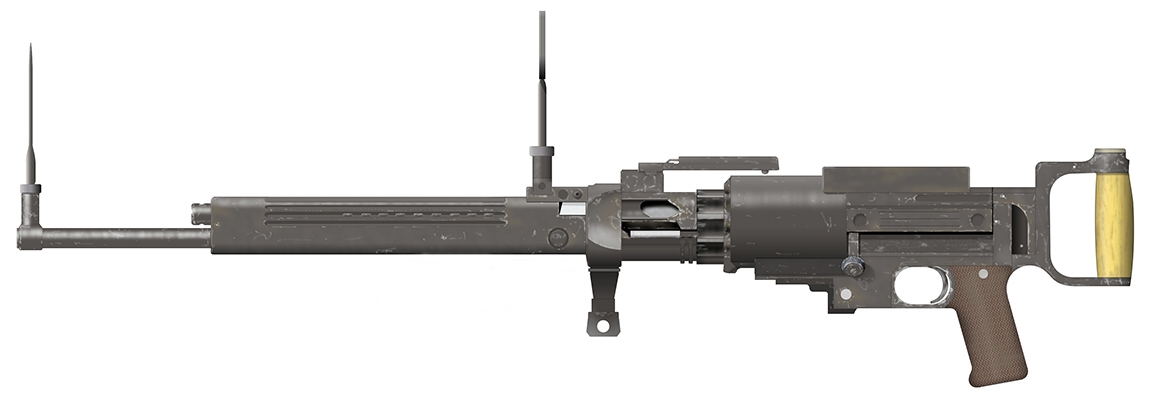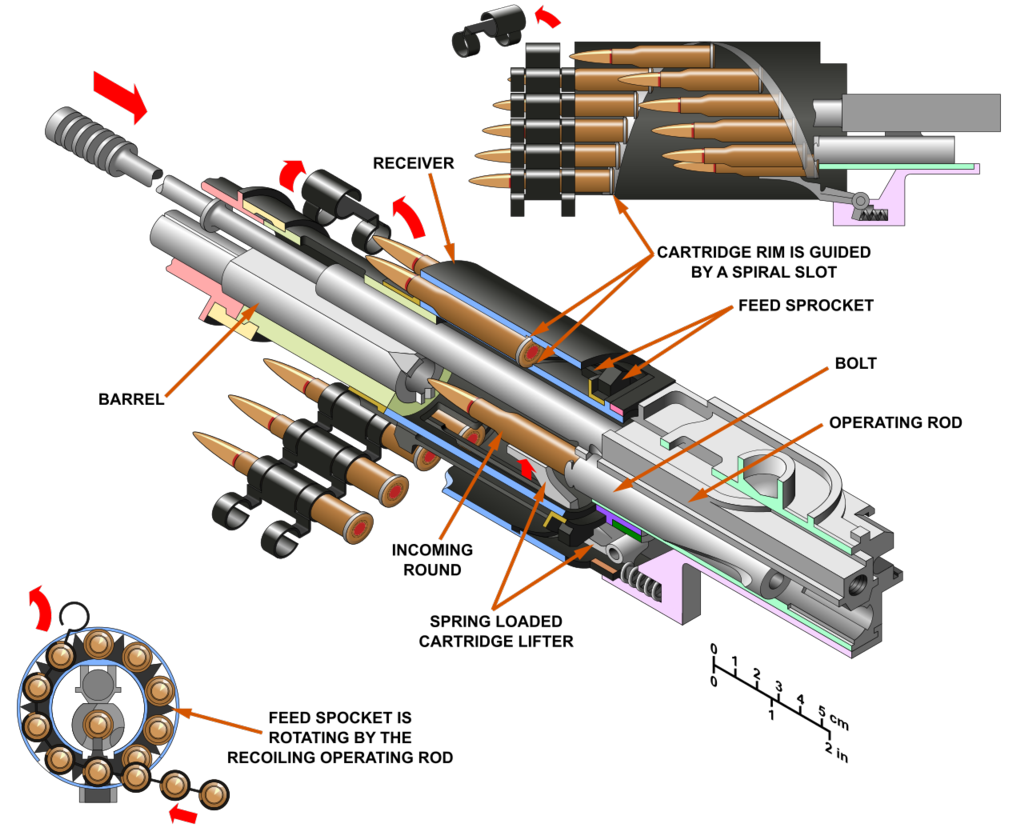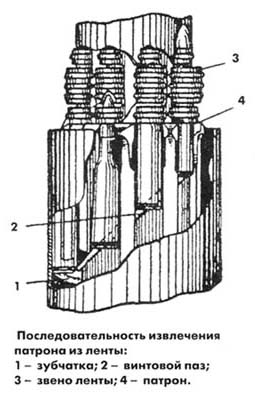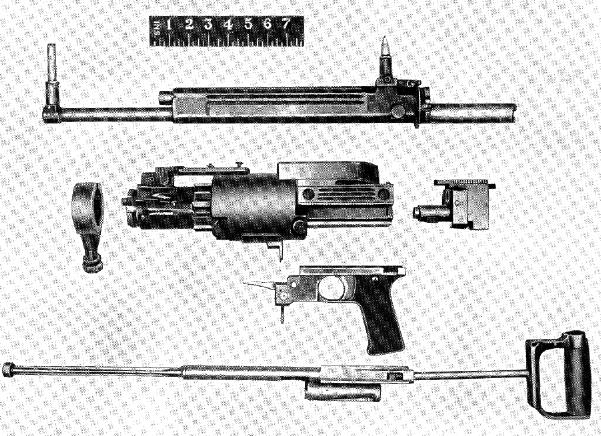This cartridge was developed during the Cold War years as an alternative to the 7.62x54R Nagant for the ShKAS rifle. Although again not the real focus of this website, it is still interesting to look at the ShKAS design and history, which will maybe give a clearer understanding of the rationale behind the development of the 7.62 Rimless version.

 GM (non magnetic) bullet
GM (non magnetic) bullet

 Possibly observation
Possibly observation

 AP or API, laquered steel case
AP or API, laquered steel case
The Russian ShKAS (Shiptal’niy Komaritskiy Aviatsionniy Skorostrelniy) was designed by the Shiptal’niy Bureau during the early 1930s under the major guidance of Senior Engineer Komaritskiy. The ShKAS KM-35 first appeared in trials during the last part of 1932 and was the result of a need by the Soviet air force for a very high rate of fire (1,500+ rpm) aircraft machine gun while still utilising the standard 7.62 Mosin-Nagant round, which made the design specifications challenging to say the least. In the case of standard infantry weapons, a very high rate of fire (600+ rpm) can be somewhat of a disadvantage, because firstly, some unfortunate grunt has to carry around all that ammo and the excessive rate of fire requires multiple spare barrels and more cooling. The same is not true for an aircraft gun; for a pilot it is imperative to have as much ammunition available as possible; as opportunities are most of the time fleeting so the pilot has to have as much lead in the air as possible.
The rotary feed system was designed to minimize movement of the cartridge cases and allow a very efficient (and thus very fast) firing cycle. It is not a revolving chamber system, but a mechanism that strips rounds out of the ammunition belt. The belt is loaded into the bottom of the cylinder, which turns one increment per shot fired. The cylinder has cutouts to hold 10 cartridges, and a helical cam which extracts the rounds just a slight bit with each movement. So the action of pulling a cartridge out of the belt is spread over 10 firing cycles of the gun, making for a very smooth action without the strong jerk required by a typical mechanism. This, together with an improvement in ammunition did much to help the functioning of the weapon, and by 1935 the ShKAS was reliably firing at a rate of 1800 rounds/min. with minimal stoppages. Misfires can be a bit of a drawback for a ground based machine gun crew, but it is deadly in an aircraft gun, where the gun cannot be cleared quickly and can leave a pilot unarmed. This lead to the development of specialised ammunition in an effort to firstly increase reliability and secondly lethality, (AP, API, API-T bullets) in an effort to counter improvements in aircraft armor, which in turn lead to small caliber cartridges reaching a limit to what can be done to them. This then lead to the basic designs being scaled up to produce the 20mm ShVAK cannon that was ultimately more adaptable, reliable and successful.
 Model of the ShKAS Rifle (http://vvs.hobbyvista.com)
Model of the ShKAS Rifle (http://vvs.hobbyvista.com)



